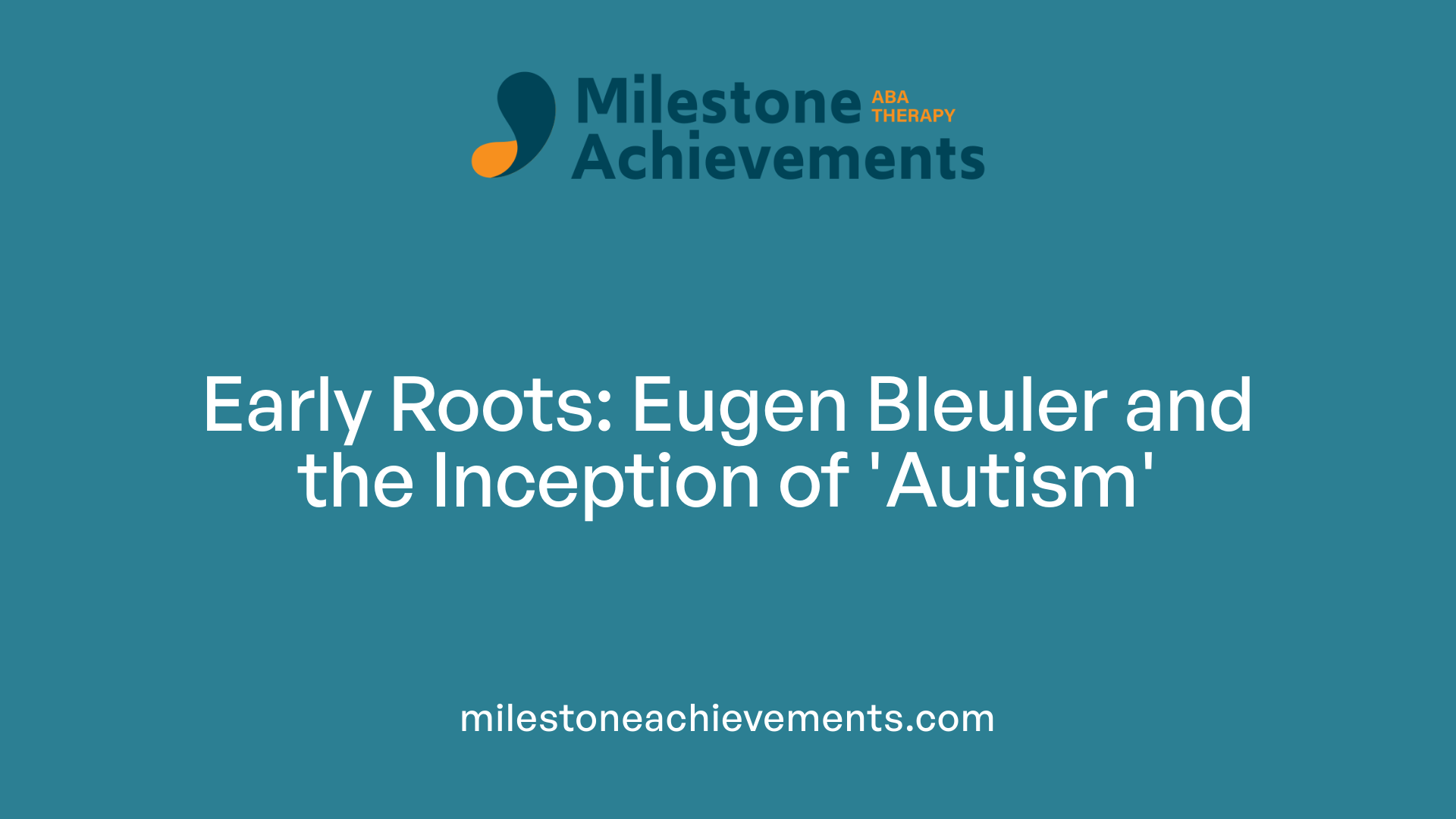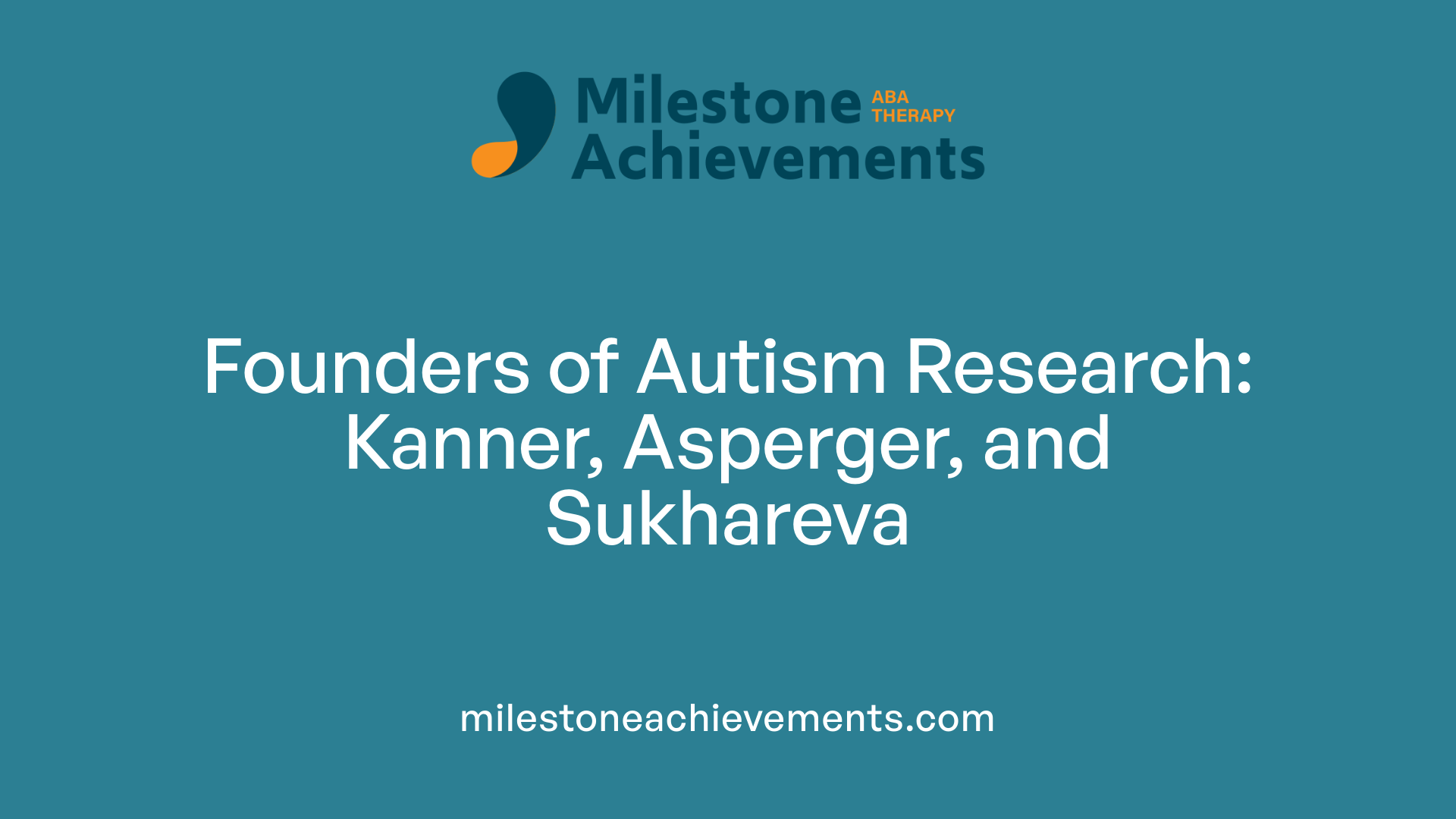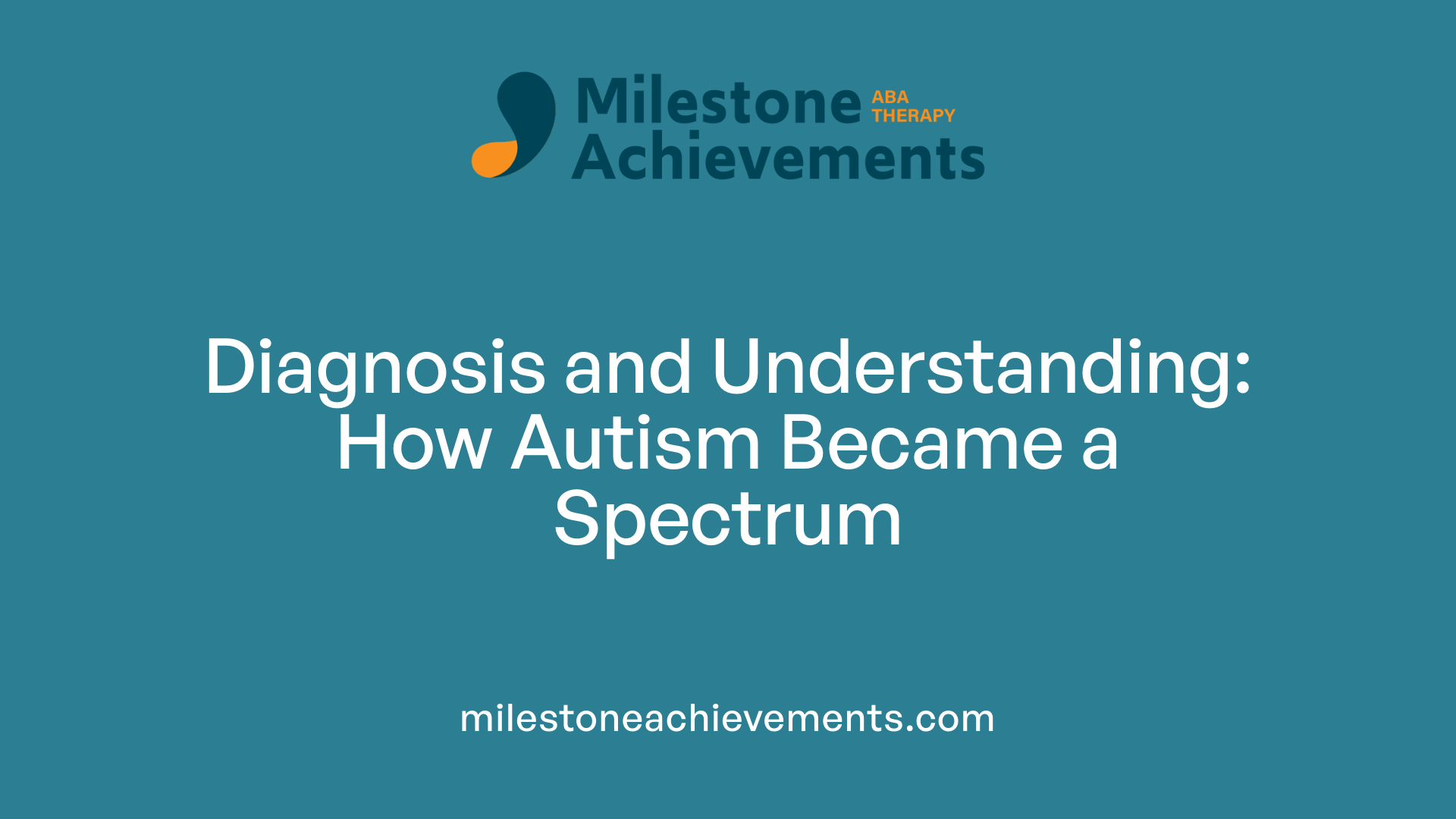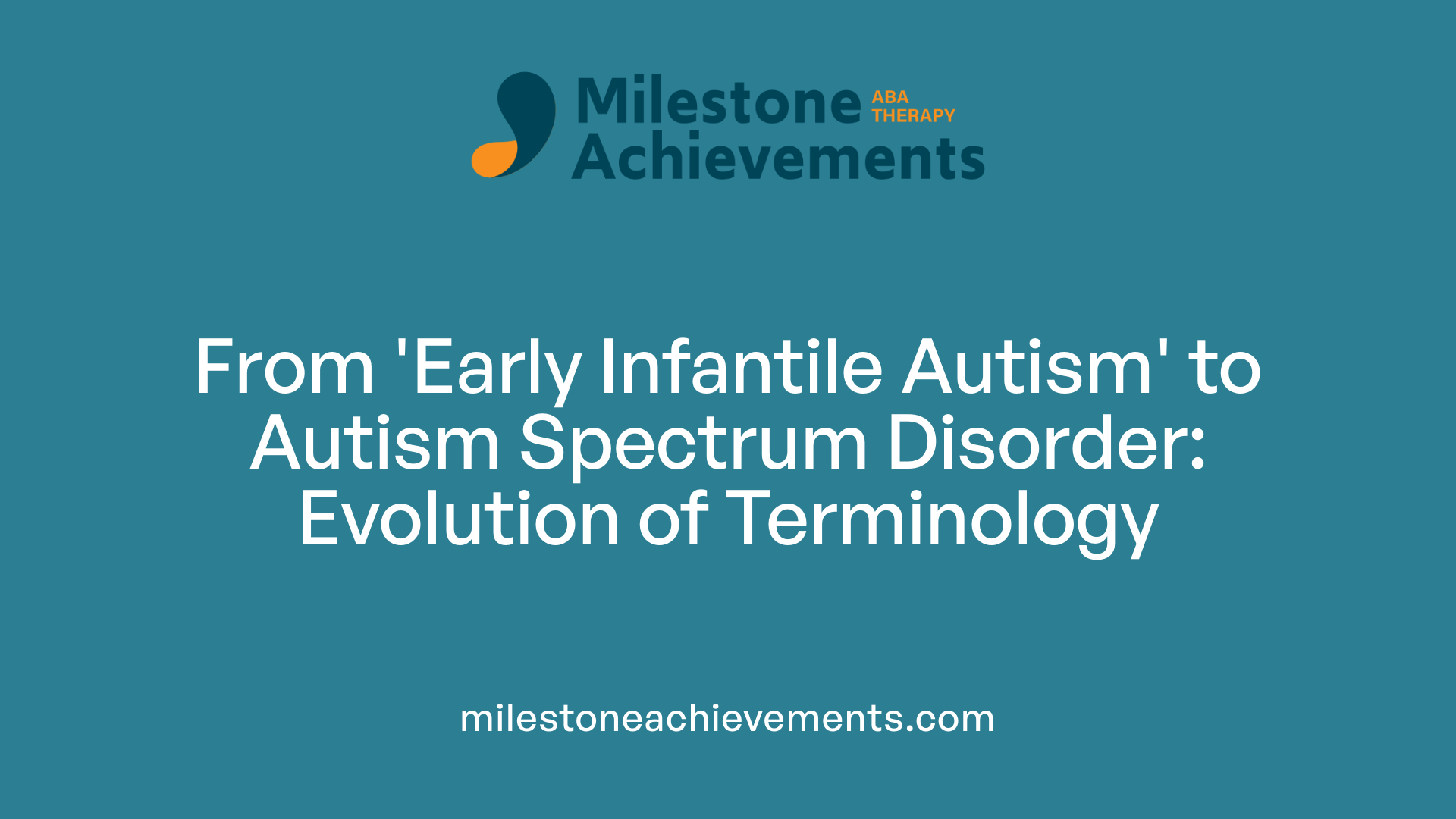
Who Made Autism?
Unraveling the Origins of Autism: A Complex Legacy
Tracing the Historical Roots and Key Figures in Autism
The question of who 'made' autism is rooted in a complex history shaped by pioneering researchers, evolving terminology, societal perceptions, and ethical debates. From early descriptions of withdrawal to a broad spectrum of neurodevelopmental conditions, understanding autism's origins requires a deep dive into medical history, scientific discoveries, and societal attitudes that have transformed over centuries.
Early Foundations: Eugen Bleuler and the First Uses of 'Autism'

Eugen Bleuler's 1911 Description of Autism as a Symptom of Schizophrenia
In 1911, the Swiss psychiatrist Eugen Bleuler introduced the term 'autism' in the context of schizophrenia. He used it to describe a particular symptom observed in some schizophrenic patients, characterized by a withdrawal into one's own world. Bleuler described autistic thinking as involving infantile wishes to escape unsatisfying realities, often through fantasies and hallucinations. His understanding linked autism to a mental state where the individual retreats into a private, internal universe, disconnected from external reality.
Initially, Bleuler's concept of autism focused on cognitive and perceptual phenomena within schizophrenia, highlighting a form of maladaptive fantasy life. This early use marked the beginning of the term's medical history, though it was rooted in psychotic symptoms rather than developmental conditions.
Initial Characterizations of Autistic Thinking Involving Fantasy and Hallucinations
Bleuler characterized autistic thinking as a desire to avoid the frustrations of real life by retreating into fantasies or hallucinatory worlds. Patients with this symptom exhibited an infantile way of processing their inner thoughts and wishes, which manifested as a kind of mental withdrawal. These tendencies were seen as maladaptive, rooted in the psychotic processes of schizophrenia.
Throughout the first half of the 20th century, the concept of autism remained closely associated with psychosis and schizophrenia. It was only later, in the 1960s and beyond, that researchers began to see autism as a distinct developmental disorder, moving away from Bleuler's original mental health framework.
The understanding of autism evolved significantly over time, shifting from a focus on fantasy withdrawal in psychosis to a focus on social and communicative deficits. Yet, Bleuler's initial description laid the groundwork for the mental health concept of autism, even as its application expanded far beyond his original context.
Pioneers of Autism: Kanner, Asperger, and Sukhareva

Who was the first person diagnosed with autism?
Donald Triplett holds the distinction of being the first person diagnosed with autism. Described by Leo Kanner in 1943, Triplett exhibited hallmark features including social withdrawal, echolalia—a repetitive speech pattern—and intense, focused interests. His case became a foundational example that helped establish autism as a distinct clinical condition.
Who were key figures in the discovery and early study of autism?
Leo Kanner is widely recognized as one of the earliest researchers to describe autism in 1943. His detailed observations of children displaying social difficulties, resistance to change, and remarkable memory earned him credit for introducing the term 'early infantile autism.'
Hans Asperger, working in the 1940s, identified a similar group of children who showed specific patterns, such as speaking like adults and experiencing motor clumsiness. Despite initially limited recognition, his work eventually influenced the classification of Asperger syndrome.
Moreover, Grunya Sukhareva, a Russian psychiatrist, described autistic features in children as early as 1925. Her detailed observations included social withdrawal, stereotyped behaviors, and strong interests, setting a precedent for future autism research. Sadly, her pioneering work was not widely acknowledged in the West during her lifetime.
Controversies surrounding Asperger’s Nazi-era involvement
Hans Asperger's legacy is complicated by historical findings revealing his involvement during the Nazi regime. Evidence suggests that he participated in referring children to clinics at risk of eugenic euthanasia. This association has sparked ongoing debate about how to honor his scientific contributions amid ethical concerns.
Despite these controversies, Asperger's early clinical descriptions of high-functioning individuals with autism spectrum features continue to shape understanding today.
| Researcher | Key Contributions | Controversies |
|---|---|---|
| Leo Kanner | First detailed autism description in 1943 | N/A |
| Hans Asperger | Identified high-functioning autism, 1944 | Nazi-era involvement and participation in eugenic policies |
| Grunya Sukhareva | Described autistic traits in 1925 | Limited recognition abroad, political barriers |
This era of autism research underscores the importance of understanding both the scientific advances and ethical contexts shaping the field.
The Evolution of Autism Diagnosis and Understanding

When was autism added to major diagnostic manuals like the DSM?
Autism was officially recognized as a unique diagnosis in the Diagnostic and Statistical Manual of Mental Disorders (DSM) in 1980, during the DSM-III edition. At this point, it was categorized as 'autistic disorder' and distinguished from schizophrenia, reflecting a growing understanding of autism as a developmental rather than a psychotic condition.
Over the years, diagnostic criteria were expanded and refined. The DSM-IV, published in 1994, further incorporated various autism-related conditions like Asperger’s syndrome and Pervasive Developmental Disorder (PDD), broadening the spectrum concept.
Finally, in 2013, the DSM-5 combined these diagnoses into a single umbrella term, 'Autism Spectrum Disorder' (ASD). This shift aimed to better represent the wide range of symptoms and severities present in individuals, promoting a more unified approach to diagnosis and support.
How has societal perception of autism evolved over time?
Initially, society saw autism as a rare and poorly understood condition. Many families faced stigma and children were often institutionalized with little support or acceptance. There was also a harmful belief that cold, unemotional mothers, known as 'refrigerator mothers,' caused autism—an idea discredited by genetic and neurobiological research.
As awareness increased, perceptions shifted significantly. The biological and neurological basis of autism became clearer through decades of research, reducing blame and blame-related stigma.
In recent years, there has been a movement toward neurodiversity—viewing autism as a natural variation of human brain wiring. This perspective emphasizes acceptance, understanding, and respect. Advocacy groups, public education campaigns, and policy changes have fostered a more inclusive societal attitude, recognizing the strengths as well as the challenges faced by autistic individuals.
This evolution reflects broader societal changes—from fear and misunderstanding to recognition and acceptance—contributing to improved quality of life and opportunities for autistic people.
Shifting Terminology and Broader Concepts

What was autism called in the early days of its recognition?
In its early recognition, autism was referred to as 'early infantile autism' following Leo Kanner’s description in 1943. Kanner documented children who exhibited social withdrawal, resistance to change, and other features that now define autism. Prior to this, similar behaviors were sometimes linked to 'autistic psychopathy' as described by Hans Asperger, and earlier psychiatric literature included terms related to hallucinations or childhood schizophrenia. The understanding was initially limited, often confounded with psychotic conditions.
How has the terminology around autism evolved?
Over the decades, the term 'autism' transitioned from specific labels like 'early infantile autism' to more inclusive, spectrum-based descriptions. Starting in 1980, the DSM classified autism as a pervasive developmental disorder, and by 1994, the term 'autism spectrum disorder' (ASD) became official, encompassing a range of conditions such as Asperger's syndrome and PDD-NOS (Pervasive Developmental Disorder-Not Otherwise Specified). This evolution reflected increased awareness that autism symptoms exist along a continuum rather than as a single, narrow diagnosis.
The influence of researchers like Lorna Wing in recognizing a spectrum
Lorna Wing, a British psychiatrist, played a pivotal role by identifying core features of autism and highlighting the variability among individuals. Her work in the 1980s helped formalize the concept that autism is not a singular condition but a spectrum. This understanding led to broader diagnostic criteria and the recognition of diverse presentations, including high-functioning autism and Asperger's syndrome.
The development of related diagnoses such as Asperger syndrome and PDD-NOS
Parallel to the shift to spectrum terminology, specific diagnoses emerged to describe particular autism profiles. Asperger syndrome, named after Hans Asperger, described individuals with typical language development and average or above-average intelligence but with social and behavioral challenges. PDD-NOS was used for individuals who didn’t fully meet criteria for other autism disorders but still exhibited significant developmental concerns.
The eventual retirement of Asperger syndrome diagnosis in DSM-5
In 2013, the DSM-5 unified these separate diagnoses under the umbrella of autism spectrum disorder, effectively retiring the distinct diagnosis of Asperger syndrome. The change aimed to streamline diagnosis and reflect the spectrum nature of autism. While some debate exists about the impact of this change, it marks a significant shift toward diagnosing autism as a single spectrum, emphasizing individual differences within a broad, inclusive framework.
| Term/Concept | Description | Historical Context |
|---|---|---|
| Early infantile autism | Childhood disorder with social withdrawal and communication issues | Kanner, 1943 |
| Autism spectrum disorder | Broad category encompassing various autism-related conditions | DSM-5, 2013 |
| Asperger syndrome | High-functioning autism with typical language development | Named after Hans Asperger, 1980s |
| PDD-NOS | Pervasive developmental disorder-not otherwise specified | Used in DSM-IV |
This historical shift reflects growing understanding and acceptance that autism exists on a spectrum, with diverse expressions and severities. The terminology evolution underscores a trajectory from narrow, diagnosis-specific labels to a broad, inclusive view that better captures individual experiences.
The Role of Society and Ethical Considerations in Autism Research

What are some ethical considerations regarding early research on autism?
Early studies of autism, especially in the mid-20th century, often lacked ethical oversight by today's standards. Researchers frequently conducted observations and experiments without consent or understanding of the impact on children and their families. Harmful stereotypes, such as blaming mothers or portraying autistic children as wholly deficient, persisted and affected societal attitudes. Modern ethics emphasize respect, dignity, and inclusion. Current practices involve active involvement of autistic individuals and their families, fostering understanding, protecting rights, and ensuring research benefits are shared responsibly.
How did eugenic ideas and Nazi involvement influence Asperger’s work?
Hans Asperger's research in the 1940s was conducted during the Nazi regime in Austria. Although his work contributed to the understanding of autism spectrum characteristics, historical evidence indicates he was complicit in Nazi eugenic policies, referring children to clinics at risk of euthanasia or extermination. This controversial aspect has led to debates about the ethics of naming the syndrome after him. His involvement highlights the importance of examining the broader social and political context in scientific research, especially regarding vulnerable populations.
What are the modern ethical standards emphasizing respect and inclusion?
Today’s autism research is governed by stringent ethical guidelines. These prioritize informed consent, confidentiality, and the active participation of autistic individuals in studies about themselves. The movement toward inclusion aims to reduce stigma and promote acceptance, recognizing autistic people as diverse and valuable members of society. Ethical standards also promote accessibility, reasonable accommodations, and respect for autonomy, ensuring research is conducted with integrity and sensitivity.
How have autism awareness movements shifted toward acceptance?
Since the 1970s, autism awareness efforts have expanded from increasing understanding to promoting acceptance. Organizations like the Autism Self-Advocacy Network and initiatives such as World Autism Awareness Day have helped educate the public and challenge harmful stereotypes. A notable shift occurred around 2011 when the focus moved from mere awareness to embracing neurodiversity and supporting autistic individuals’ rights. This change fosters societal inclusion, ensuring that autistic voices are heard and respected.
| Aspect | Focus | Impact |
|---|---|---|
| Early research | Lack of oversight, stereotypes | Harmed reputation, misinformed public |
| Historical context | Nazi eugenics, Asperger’s involvement | Ethical debates around syndrome naming |
| Modern standards | Respect, inclusion, participation | Improved rights, better science |
| Awareness shift | From awareness to acceptance | Societal inclusivity, neurodiversity recognition |
The Ongoing Legacy and Future of Autism Understanding

Who made autism?
Autism was not the creation of a single person but the result of many pioneering efforts by researchers and clinicians over the decades. Eugen Bleuler introduced the term in 1911 to describe a symptom of schizophrenia involving withdrawal into one’s inner world. In 1943, Leo Kanner described children with distinct social and communication difficulties, calling it 'early infantile autism.' Around the same time, Hans Asperger identified children with social challenges, who often had higher cognitive abilities, now known as Asperger's syndrome. Even earlier, in 1925, Russian psychiatrist Grunya Sukhareva documented behaviors resembling modern autism in children. These foundational discoveries, despite some controversies, continue to influence how we understand autism today.
How do historical discoveries influence current perceptions?
Historical insights have shaped the way autism is viewed in society. Initially considered a rare, child schizophrenia-like condition, over time, it has evolved into the autism spectrum, appreciating its diversity. Early theories blaming parenting or eugenics have been dismissed in favor of biological, genetic, and neurological explanations. The recognition of autism as a spectrum—introduced in the DSM-5 in 2013—mirrors the broad range of signs, severities, and abilities observed in individuals.
The importance of acknowledging both scientific contributions and controversies
While researchers like Asperger and Kanner made significant contributions, their work is also intertwined with controversial aspects, such as Asperger's involvement during the Nazi era. Acknowledging these complexities is crucial for a balanced understanding. It reminds us of the importance of ethics in research and honors the resilience of those whose lives are affected by these histories.
The role of advocacy and the neurodiversity movement
In recent decades, advocacy groups like the Autism Self-Advocacy Network have promoted 'Autism Acceptance,' emphasizing respect, understanding, and valuing neurodiverse identities. The shift from mere awareness to societal acceptance has increased inclusion efforts, driven by autistic voices and lived experiences.
Future directions in research, diagnosis, and societal integration
Looking ahead, research continues to explore neurological, genetic, and biological factors that contribute to autism. Advances in neuroimaging and genetics promise more precise diagnoses and personalized interventions. Society is moving toward greater acceptance and integration of autistic individuals, emphasizing strengths and supporting diverse ways of thinking. Initiatives like Global Autism Awareness Day highlight this ongoing journey, advocating for a future where autism is understood, accepted, and celebrated.
| Aspect | Focus | Description |
|---|---|---|
| Historical Discoveries | Contributors | Bleuler, Kanner, Asperger, Sukhareva |
| Perception Shifts | From psychopathology to spectrum | Evolution of understanding autism |
| Controversies | Ethical and historical controversies | Asperger's Nazi-era involvement |
| Advocacy & Movements | Acceptance & neurodiversity | Inclusion, rights, respect |
| Future Directions | Research & societal integration | Genetics, neuroimaging, inclusion efforts |
Reflecting on a Complex Legacy
Understanding who 'made' autism involves recognizing a tapestry of scientific discovery, societal influences, and ethical debates. The contributions of researchers like Kanner, Asperger, and Sukhareva form the foundation, but their legacies are intertwined with controversial histories. Today, ongoing efforts emphasize respect, neurodiversity, and inclusion—shaping a future where autism is understood not as a flaw but as a vital aspect of human diversity.
References
- Autism History - News-Medical.net
- History of autism - Wikipedia
- How autism became autism: The radical transformation of a central ...
- What's in a Name? The History of Autism Spectrum Disorder
- Historical Perspective - National Autism Center at May Institute
- Hans Asperger, Leo Kanner, and the History of Autism - 3DA
- Asperger syndrome (Asperger's) - National Autistic Society


Partner with us on your child's journey
Milestone Achievements offers evidence-based ABA therapy to help children with autism reach their full potential. Together we’ll set meaningful goals and celebrate progress every step of the way.
Start ABA Services Today


